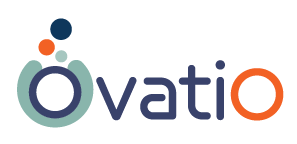AI Decision-Making in Business: A Practical Guide for Leaders

Artificial intelligence (AI) has the potential to transform how companies operate, creating opportunities for faster decisions, cost savings, and new sources of growth. At the same time, AI can feel intimidating, especially when it comes to “agentic” systems—tools that can make decisions on their own or with minimal human supervision. This guide aims to show how business leaders can tap into AI safely and responsibly to power their organizations forward.
Why Different AI Models Matter
You may have heard that AI can do everything from generating marketing copy to detecting fraud. But not all AI systems are the same. Some are better at simple tasks like brainstorming ideas or writing quick drafts. Others are more advanced and can handle complex “reasoning”—in other words, breaking down a problem step by step and coming up with a detailed conclusion.
Hallucinations: The Creativity (and Risk) Factor
Some AI models have a tendency to produce results that seem plausible but are actually incorrect—often called “hallucinations.” While these can be problematic if you expect precise facts, they can also spark creativity when you’re looking for new ideas or angles.
Newer “Reasoning” Models
Recently, major AI companies like OpenAI and Google have introduced more advanced AI models designed to tackle harder tasks. These systems take extra “thinking time” (not literal human thinking, but an internal process) to consider a problem before giving an answer. By slowing down to look at potential solutions, they can reduce (though not eliminate) mistakes. They also produce clearer, step-by-step explanations.
Retrieval-Augmented Generation (RAG)
For greater accuracy, many organizations now use a technique called Retrieval-Augmented Generation (RAG). This simply means letting the AI quickly look up relevant information from trusted sources—like your own company database—before generating a response. When combined with checks and balances from people or other AI systems, this approach can greatly cut down on inaccuracies.
AI in Action: Deciding Which Decisions to Automate
The big question for any leader is: Where should we use AI, and where should human judgment still lead? Let’s look at two different examples.
High-Risk Decisions
For decisions where a serious mistake could harm your company’s finances, reputation, or even people’s well-being, most leaders choose a blended approach. For example, in a financial institution, an AI tool might analyze loan applications and produce a recommended risk rating. However, a qualified underwriter or risk manager still reviews any unusual or high-stakes cases, ensuring human oversight remains where it matters most.
This approach balances:
- AI Speed and Scale – An AI system can process far more data, far faster than people alone.
- Human Judgment – People bring experience, context, and ethical considerations that AI might miss.
Lower-Risk Decisions
In areas where errors are less damaging or can be quickly spotted and fixed, businesses often let AI run with little or no human interference. A good example is real-time pricing in e-commerce. The AI sets product prices based on demand, competitor rates, or inventory levels, checking its performance moment to moment. If sales drop unexpectedly, human managers can step in to see what went wrong and make any necessary adjustments. Because pricing is easily measured and errors can be reversed quickly, a fully automated system often works best here.
How “Smart” is AI, Really?
Leaders often wonder if AI can make better decisions than people. The answer depends on the specific AI model, the data it has access to, and how well it’s been tested and monitored. Advanced “reasoning” AI can solve complex problems and even detect nuances that humans might miss, but it’s not foolproof. Mistakes can still happen, and it’s crucial to weigh that risk against the benefits of quicker insights and improved efficiency.
Balancing Innovation with Risk Management
Introducing AI into your business doesn’t have to be all-or-nothing. Instead, think of it on a spectrum:
- Full Automation: AI makes decisions with little to no human input. Ideal for low-risk, high-volume tasks.
- Human-in-the-Loop: People oversee and approve AI decisions before they go into effect. Best for high-risk or highly regulated areas.
- Hybrid Approaches: Some steps are automated, while others remain the responsibility of experienced employees who can handle exceptions and more nuanced calls.
When determining the best approach, consider:
- Financial Cost of Errors: Could a wrong decision lead to a major loss or damage customer trust?
- Regulatory Requirements: Are you in a highly regulated industry like finance or healthcare?
- Speed of Feedback: Can you quickly identify AI mistakes and correct them?
- Scalability: How much data needs to be analyzed—and how often?
A Simple Plan for Getting Started
- Pick a Low-Risk Pilot Project
Begin with a process that’s easy to measure and won’t cause major setbacks if mistakes happen—like automating responses to common customer support queries or scanning documents for standard forms. - Use Advanced Tools (With Caution)
If your project needs more complex problem-solving, consider advanced AI systems that can explain their reasoning. Just remember that no system is perfect. - Combine AI with Human Oversight
Even if you trust your AI, you’ll want people to occasionally check the outputs, especially at the start. This helps catch errors, build confidence, and provide feedback that improves the system over time. - Set Up Checks and Balances
- Validation Layers: Use a second AI model or a human review process to confirm important results.
- Audit Trails: Keep records of AI decisions so you can see how the AI arrived at its conclusions.
- Monitor, Measure, and Refine
Regularly track your AI’s performance. Are you seeing fewer errors, faster processes, or higher revenue? Gather feedback from employees and customers, then fine-tune as needed.
Key Takeaways for Leaders
- AI is a spectrum: You can choose how much control to give it based on risk, timing, and business goals.
- Start small, then scale: Begin with targeted use cases and grow from there as you learn what works.
- Keep humans involved where it counts: For high-value or high-risk decisions, a human touch is often essential.
- Leverage advanced capabilities wisely: Modern AI can handle more complex tasks than ever, but it still needs guardrails.
- Build trust through transparency and safeguards: Clear validation and oversight processes will help employees and stakeholders feel confident about AI’s role.
Moving Forward
AI adoption is a journey, not a one-time event. As more advanced systems become available and your organization gains experience, you can adjust the balance between AI-driven automation and human decision-making. The ultimate goal is to harness AI’s speed, scale, and insights—without losing the critical judgment, ethics, and empathy that only people can provide.
If you’d like to explore how AI can support your company’s unique needs and challenges, we’d be happy to discuss next steps. With thoughtful planning and the right approach, AI can be a powerful ally in helping your business work smarter, faster, and more competitively—while still keeping humans firmly in control where it truly matters.
